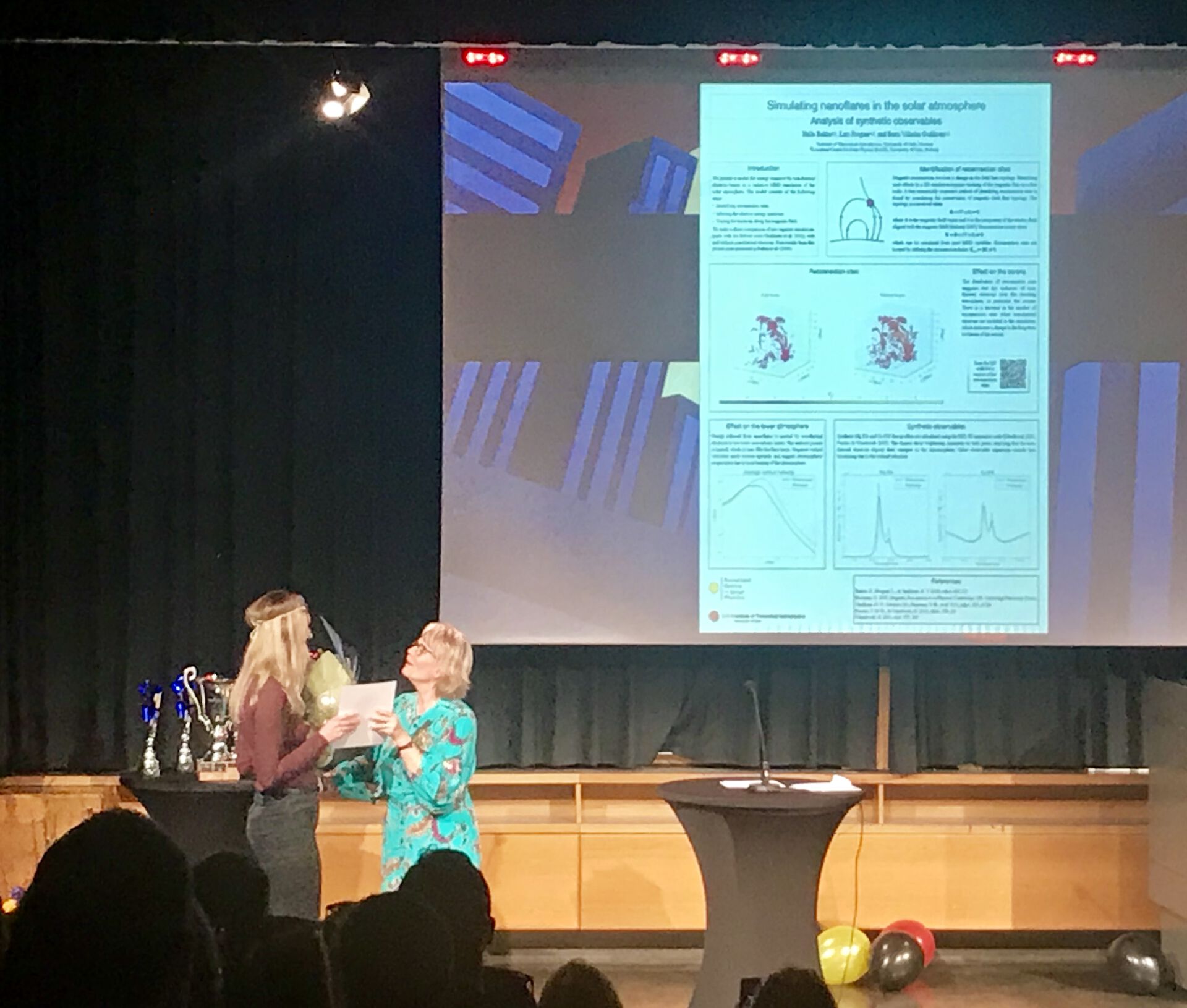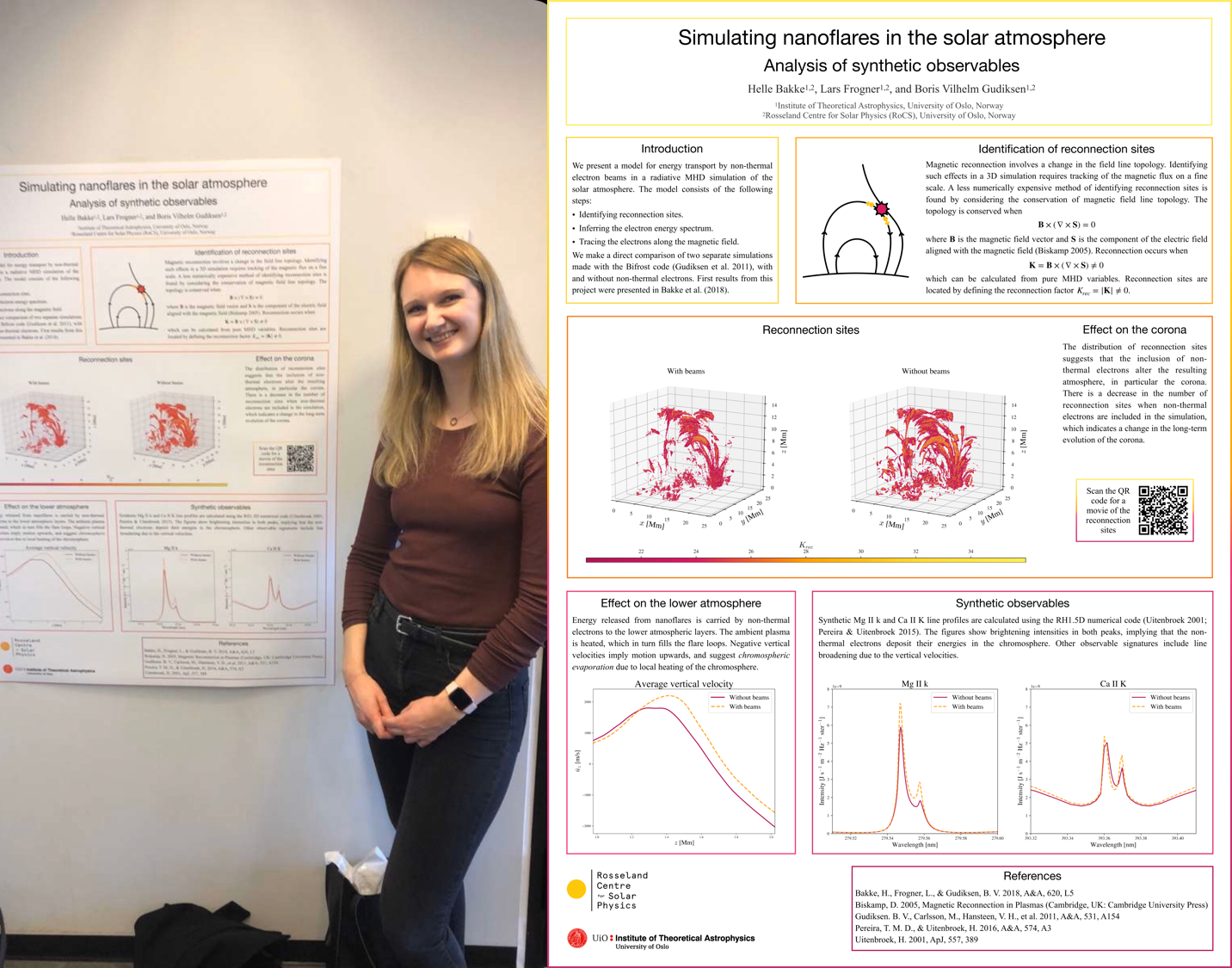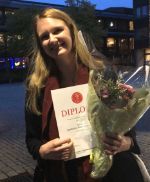
“Simulating nanoflares in the solar atmosphere: Analysis of synthetic observables”, is the title of this year winning poster for the "Audience choice" at the Ph.D. poster session 2019 within the PhD Day 2019, arranged by the Faculty of Mathematics and Natural Sciences and the Science Library on October 18th.
– "My poster presents a model for energy transport by non-thermal electron beams in a radiative magnetohydrodynamic simulation of the solar atmosphere", says Helle.
 Poster sessions: engage in conversation!
Poster sessions: engage in conversation!
Helle Bakke, second year old Ph.D. candidate at the Rosseland Centre for Solar Physics (RoCS), grabbed the opportunity to disseminate her research and to reach out a wide audience made of students, fellow Ph.D. candidates, professors and faculty members.
– "I focused mostly on keeping the poster easy to read, especially without adding too much text".
Indeed, engaging the audience in conversation rather than reading the poster and continue on to the next is Helle's aim.
– "Since I am in the early stages of my degree, I find it important to talk to researchers and broaden my network. Poster sessions are excellent for this!"

Playing with colours and texts
Helle presented this work at two conferences this year, where the target audience was researchers in solar physics. But for PhD Day, her first poster contest, she implemented new ideas on how to make the poster approachable.
– "I created a custom colormap for my figures, where my main figure (a 3D figure of loop-like structures) would act as the eye-catching feature. I reused the colormap for the entire poster, where every textbox was framed with colors going from light yellow to dark red/pink. The idea was to use the colormap as a guide on how to read it; the audience would start reading the lightest framed textbox, then moving on to the darker ones", explains Helle.
Tips & Tricks to fellow students
Sometimes making a poster is a difficult process for both young and experienced researchers, where the biggest challenge is to include relevant information without adding too much text.
– "I think bulleted lists or figures are better options when communicating advanced work. It is also important to remember that the poster presentation can open up for discussions on specific parts of the research that may not have made it to the poster. Such discussions are extremely valuable, as they can lead to future collaborations", she points out.
Making a poster can also be time-consuming, but it is also a fun process where you can express your creativity in multiple ways.
"There exists a variety of webpages with inspiration on layouts, colors, fonts etc. Go nuts!"
Helle recommends looking at the links provided by the Science Library on the webpage "Make better posters". They contain useful information on font styles and sizes, logo placement and much more.
Shopping worth 2000 NOK

The award ceremony took place during the yearly Real Moro social event organised by the Faculty of Mathematics and Natural Science, where the entire Institute of Theoretical Astrophysics could support and congratulate her! The prize for "Audience choice" consists of NOK 2000, a considerable amount of money that could be spent for...
– "I am not sure! Shopping or candy? Or maybe both? Probably both..", confesses Helle.